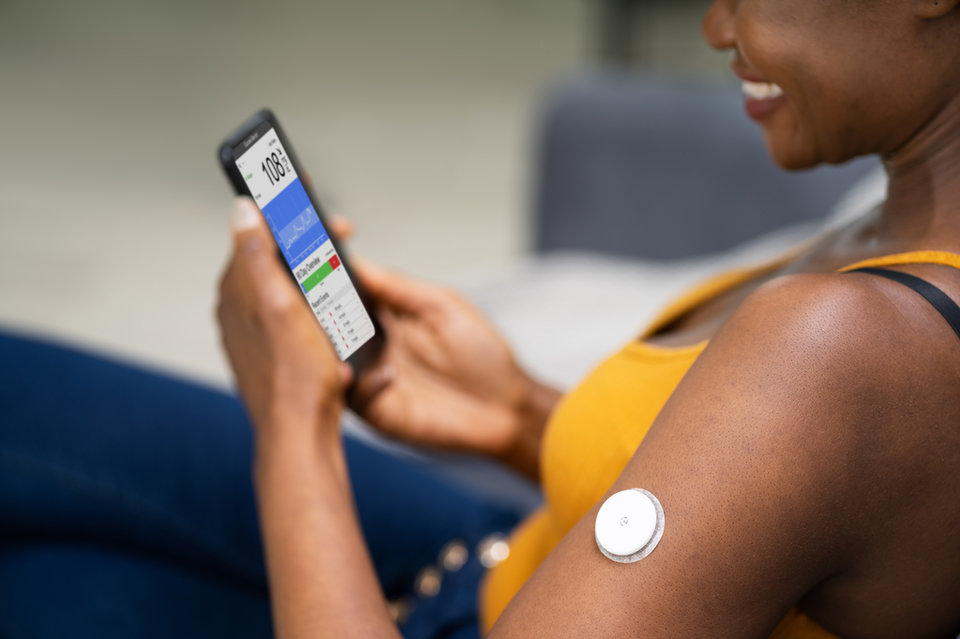Introduction
As the field of diabetes management continues to evolve, so does the technology that empowers individuals to lead healthier lives. One groundbreaking advancement in this realm is Continuous Glucose Monitoring (CGM) technology. CGMs have revolutionized diabetes management by providing real-time insights into blood glucose levels, allowing for better decision-making regarding insulin dosing, diet, and overall lifestyle. However, the future of CGMs holds even more promise, with innovative developments poised to take diabetes management to the next level. In this article, we’ll explore the cutting-edge advancements shaping the future of CGMs, including integration with insulin pumps, predictive algorithms, and the emergence of closed-loop systems.
The Future of CGMs: A Glimpse Ahead
The “Future of CGMs” is not just a phrase; it’s a projection of remarkable breakthroughs that are already transforming the landscape of diabetes care. These advancements aim to enhance user experience, streamline diabetes management, and ultimately improve the quality of life for those living with diabetes.
Integration with Insulin Pumps: A Seamless Partnership
One of the most promising developments on the horizon is the integration of CGMs with insulin pumps. This integration will create a closed-loop system, often referred to as an “artificial pancreas.” In this scenario, the CGM continuously monitors glucose levels and communicates with the insulin pump, which responds by delivering precise doses of insulin as needed. This automated approach seeks to mimic the body’s natural insulin production, effectively reducing the risk of both hyperglycemia and hypoglycemia. Please fill out this form to determine whether or not you or a friend are eligible for a CGM.
Read Guide about Wegovy Dosage Guide: The Best Way For Weight Loss
Predictive Algorithms: Anticipating Glucose Fluctuations
Predictive algorithms are poised to play a pivotal role in the future of CGMs. These algorithms analyze the historical CGM data of an individual to forecast future glucose fluctuations. By recognizing patterns and trends, the algorithm can predict when blood glucose levels might spike or drop, allowing users to proactively manage their condition. This innovation not only empowers better decision-making but also minimizes the guesswork often associated with diabetes management.
Closed-Loop Systems: A Step Towards Automation
Closed-loop systems, also known as automated insulin delivery systems, are at the forefront of CGM innovations. These systems integrate CGMs and insulin pumps, leveraging real-time glucose data to automatically adjust insulin delivery. The aim is to maintain blood glucose levels within a target range without the need for constant manual intervention. Such closed-loop systems hold the potential to enhance glycemic control, reduce the burden of diabetes management, and offer newfound peace of mind.
Also Read About: Special Diabetes Program
Benefits of the Future of CGMs
The advancements in CGM technology are not merely theoretical concepts; they bring tangible benefits that can transform the lives of individuals with diabetes:
- Improved Glycemic Control: Integration with insulin pumps and predictive algorithms empowers users to achieve tighter glycemic control, reducing the risk of both short-term and long-term complications.
- Enhanced Convenience: Closed-loop systems minimize the need for frequent glucose checks and insulin dosing, allowing users to focus on other aspects of their lives.
- Reduced Hypoglycemic Episodes: Predictive algorithms and automated insulin delivery contribute to fewer episodes of dangerous hypoglycemia, providing a safer diabetes management experience.
- Personalized Management: CGM innovations provide personalized insights, allowing users to tailor their diabetes management strategies based on individual patterns and responses.
Challenges and Considerations
While the future of CGMs holds immense promise, it’s important to acknowledge potential challenges and considerations:
- Cost: Advanced CGM technologies, especially closed-loop systems, may come with higher costs. Ensuring accessibility and affordability for all individuals with diabetes will be crucial.
- Training and Education: Users will need proper training and education to harness the full potential of these innovations, especially as automation becomes more prominent.
- Data Privacy and Security: With the increasing connectivity of CGMs, ensuring the privacy and security of sensitive health data becomes paramount.
- User Engagement: While automation can ease the burden of management, maintaining user engagement and empowerment will remain essential.
Conclusion
The future of CGMs is undeniably exciting, with advancements that have the potential to reshape the way individuals manage their diabetes. Integration with insulin pumps, predictive algorithms, and closed-loop systems are not just concepts; they are tangible steps towards improved glycemic control, enhanced convenience, and a better quality of life for those living with diabetes. As these innovations continue to develop and become more accessible, the future of diabetes management looks brighter than ever before. It’s a future where individuals can navigate their diabetes journey with greater confidence, knowing that technology is working hand in hand with them to ensure optimal health and well-being.


